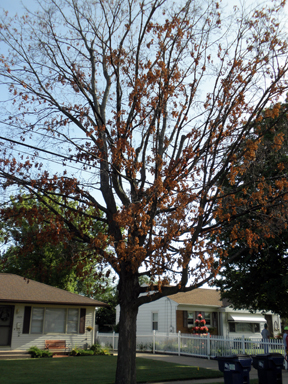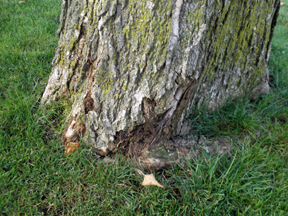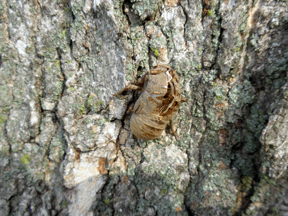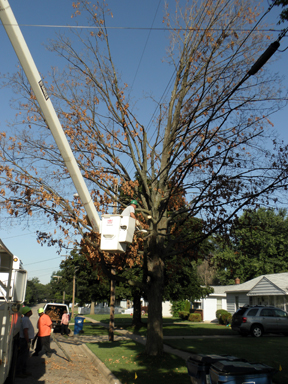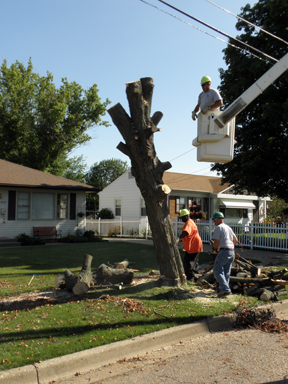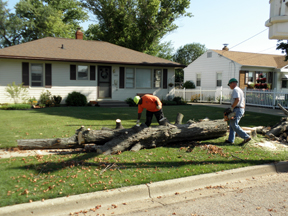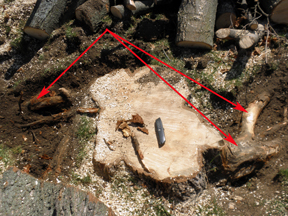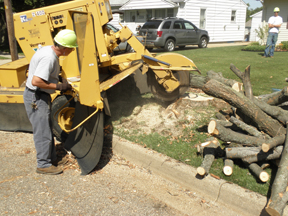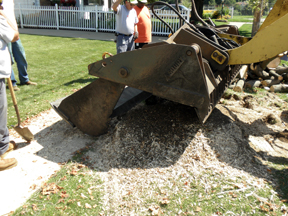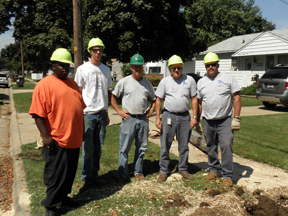Maple tree autopsy
Editor’s note: This article is from the archives of the MSU Crop Advisory Team Alerts. Check the label of any pesticide referenced to ensure your use is included.
Two
weeks ago I was talking to Jeanne Himmelein, MSU Extension Kalamazoo
County, and the topic of declining maple trees came up. She said the
city was cutting another dead one down that week. I asked her if it
might be all right for me to come and watch the tree being cut down,
inspect the cut up tree parts and collect some samples to possibly
determine the cause of death. She said she would have to check it out.
She called me back a few minutes later saying she was able to wave the
tree removal crew off until I could get down there. A week later, I
was able to sneak out of the lab for a road trip to Kalamazoo where I
met Jeanne and Linda Whitlock from the MSU Extension office in Kalamazoo
and Jeff Wolthuis with the Kalamazoo Public Works Forestry Department.
The dead sugar maple located along a city street in Kalamazoo. The
neighborhood was developed in the late 1950’s, and I estimated the tree
to be about 50 years old. It was about 28 inches in diameter at the
base. It was planted between the curb and the sidewalk. The tree had
been pruned considerably in 2008 to protect the utility lines that
passed through the center of the canopy.
The tree produced new leaves this spring then died. Neighbors, who had
gathered to watch the crew work, reported that the tree had been ailing
the past few summers. One neighbor speculated that gall mites had
weakened the tree. I assured him that gall mites do not kill mature
sugar maple trees. When an entire tree flags, that is, all the leaves
or needles turn brown or yellow, at the same time then a problem with
roots or main trunk is strongly indicated. This tree showed some minor
mower injury around the base, but I didn’t think enough to cause the
tree to die.
As the crew removed the branches and main limbs, I was able to inspect
these sections. Jeff remarked right away that the limbs and branches
were noticeably dry; there wasn’t any sap under the bark. I didn’t see
any signs of mass insect attack that could have killed the limbs and
branches and the bark was still firmly attached. Some minor insect
boring was evident on some of the limbs and main trunk but nothing
extensive enough to cause dieback. Some staining was present in
branches that had been trimmed by the power company. Other limbs that
had not been pruned back did not show staining that would have indicated
a vascular disease.
After the tree was felled, I dug around the base of the tree to expose
the roots. The outer bark on the roots easily peeled away and the wood
beneath was darkly stained. It appeared to me that the roots of this
tree had died before the above ground portion. A quick look at the
growth rings on the stump supported the neighbor’s observations that the
tree had be struggling for last two or three years. Five-year-old
annul rings were a little under a quarter inch wide then during 2007 and
2008 the width of rings went to about a millimeter. Poor growth is
usually a sign of stress and often a sure sign of decline.
Unfortunately, the roots had been dead too long for our pathologists to
culture the samples we collected for root pathogens, but it was clear
that this tree had died from the bottom up.
When I discussed this tree with members of the Arboriculture Society of
Michigan at their annual meeting at Oakland University last week,
several reported many of the declining maples they came across this
summer were also planted between the street and sidewalk. A few
speculated a gas leaks might be the cause, but we didn’t think this was
the case with the Kalamazoo tree since the grass at the base of the tree
was green and healthy. Natural gas leaks tend to kill grass too.
Other ASM members suggested the decline may be a delayed response to
droughty conditions southern Michigan suffered during the summers of
2007 and 2008. This is certainly a good possibility since sugar maple
is a forest species and a climax species to boot in eastern deciduous
forests. One would expect this species to be stressed any time it is
planted in a landscape situation, especially if crammed into a narrow
strip of soil between a street curb and the sidewalk. Now add drought
stress to the equation and one should expect sugar maple to suffer and
even decline under these circumstances.



 Print
Print Email
Email
